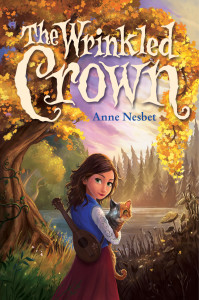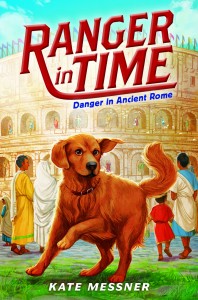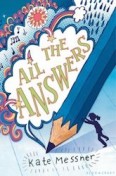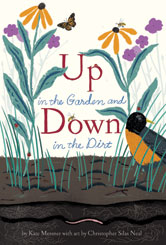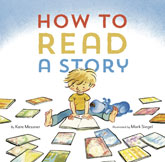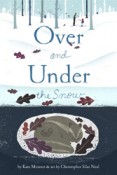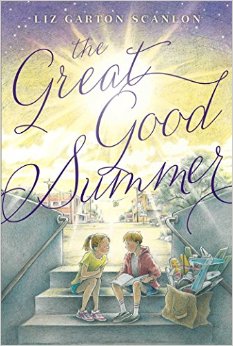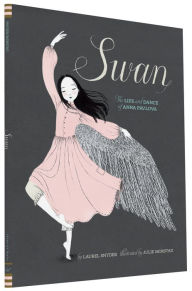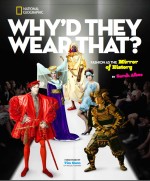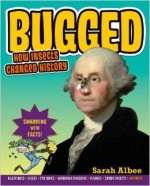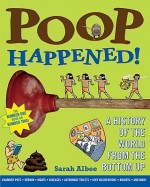Happy Monday, Teachers Write campers – and welcome to our third week of writing together. It’s hard to believe that we’re halfway through summer camp, isn’t it? Today, you can head to Jo’s blog for your Monday Morning Warm-Up…and then come back here for Mini-Lesson Monday with guest author Anne Nesbet.
Anne writes novels for middle-grade readers and also teaches. Her first two books are set in a magical version of Paris and are called THE CABINET OF EARTHS (HarperCollins 2012) and A BOX OF GARGOYLES (HarperCollins 2013). She’s also written THE WRINKLED CROWN (HarperCollins 2015) and CLOUD & WALLFISH, a historical spy-vs-spy story set in East Berlin in 1989, coming from Candlewick in 2016. Anne lives near San Francisco with her husband, several daughters, and one irrepressible dog. Here’s her lesson for today:
Getting into Characters’ Heads: Some Sneaky (and Wonderful) Narrative Strategies
We build new worlds in our stories, and the richer the details of those worlds, the more our tales will haunt the reader. But just as important as any outside landscape (whether we’re talking about a standard-issue middle school, a house on the lonely moors, or a castle inhabited by humanoid dragons) are the inner worlds of our characters. Inviting the reader into a character’s head is a way to add depth, spice, and resonance to everything that happens in the story.
There are many fine ways–some trickier than others–to show your readers what your characters are thinking. Help us see the world of your story through the eyes of your characters! Here are some narrative strategies that can help you do exactly
Strategy #1. You can QUOTE the character’s thoughts.
Fancy term: Quoted Monologue (or “interior monologue”)
What it is: The author quotes the thoughts going on in a character’s head, almost as if he or she had hidden a microphone in the person’s brain.
Example: “‘I can’t believe I blushed like a fool when Lulu said hello. How come I’m always such a freaking idiot around her?’ thought Joe, as he scuffed the ground angrily with his toe.”
A quoted monologue is the simplest, clearest way to convey the thoughts of a character. Sometimes you’ll see quoted thoughts written out in italics, instead of captured within quotes, but the effect is the same (I can’t believe I blushed like a fool…). This technique isn’t subtle, perhaps, but then again, subtlety isn’t always necessary. Sometimes we just want to listen in on the characters as they think!
Strategy #2. You can TELL us about the character’s thoughts.
Fancy term: Psycho-Narration
What it is: The author narrates to us the thoughts of the character–using the language of the author, not necessarily the character himself.
Example: “You could tell from the way his toe kicked little scuff-marks into the earth that Joe felt miserable. Poor Joe! He was thinking about how flustered he had become when Lulu said hello. Joe always judged himself harshly–and no one can judge more harshly than a fifteen-year-old boy–after a run-in with Lulu.”
In psycho-narration, in which the narrator describes the inner world of a character using the narrator’s language, the divide between character and narrator looms rather large. (In our way-too-obvious example here, the narrator jabbers on about the nature of “fifteen-year-old boys” in a way no actual, self-respecting teen would speak of himself.)
“Telling” is not always a bad thing, by any means! Sometimes (often) we are writing about characters who do not yet have a full understanding of what’s going on in their own heads; sometimes the story will be richer for the narrator’s hopping in to make something clear–or to infect the story with his/her own perspective on the matter.
Speaking of narrative infection, here’s a third strategy, much sneakier than the first two, but potentially very effective:
Strategy #3. You can sneakily quote the character IN DISGUISE (disguised as the narrator)
Fancy term: Narrated Monologue (also called “free indirect discourse”)
What it is: The author presents the thoughts of the character in the form of narration (not quotation), but using the language of the character.
Example: “Joe couldn’t believe he had blushed like a fool when Lulu said hello. Why was he always such a freaking idiot around her?”
As you can see, these are Joe’s thoughts in Joe’s own words (as in the example for “quoted monologue” above), but Joe’s words are disguised in the third-person and past-tense costume that a narrator might wear! Although the example here is a particularly simple one, in practice the narrated monologue can create some very interesting, perplexing, tricky situations. When the voices of narrator and character infect each other, the prose can become complex indeed.
Today’s Assignment:
Think up a character with a different way of looking at the world (and a different way of talking) than “you” (as narrator) have. Your character is thinking about something. What is s/he thinking?
1. Show us using Quoted Monologue.
2. Tell us using Psycho-Narration.
3. Sneakily bring us into his/her head using Narrated Monologue.
____________________________________________________
Note from Kate: If you’d like to share one of your examples in the comments today, feel free!






